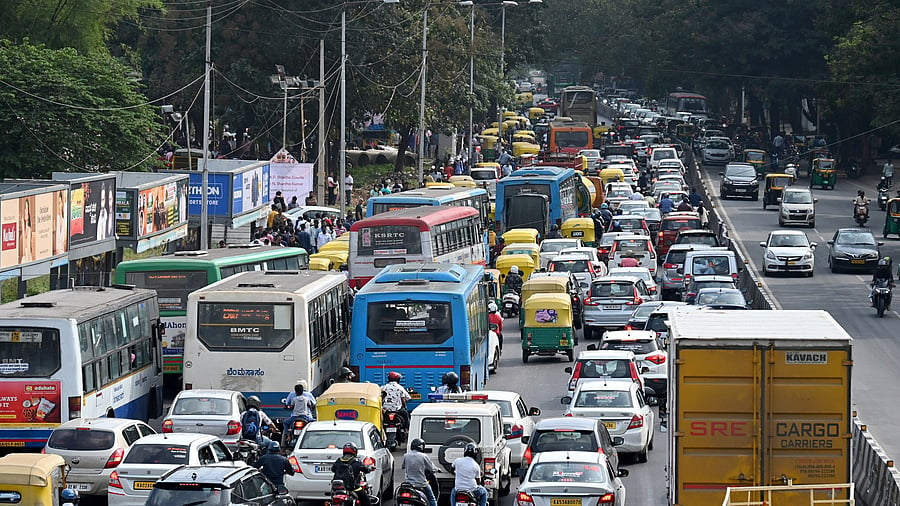
Traffic in Bengaluru,
Credit: DH File Photo
Bengaluru: There is a need for policies and projects that will consider sustainable mobility solutions and study their impact from a public health lens in Bengaluru, a recent summary report from a multi-stakeholder session shows.
The report, released earlier this month, summarised key takeaways from a workshop headed by Prof Dr Ashish Verma (Convenor, IISc Sustainable Transportation Lab) and Prof Dr Prabhdeep Kaur (Isaac Centre for Public Health, IISc), facilitated by the Bengaluru Science and Technology (BeST) cluster, an initiative of the Office of the Principal Scientific Adviser to the Government of India, last year.
The workshop comprised representatives from stakeholders such as Nimhans, WRI India, Bengaluru traffic police, BBMP, B.PAC, Sensing Local and Biocon Foundation to explore policy and implementation gaps in sustainable mobility solutions in India.
It also identified best practices in India and abroad, including TenderSURE roads, shared auto service in Kolkata, Bengaluru's Church Street design that promotes walkability and reduced car usage, Bogota’s bus rapid transit system (BRTS), and citizen participation in transport planning in Paris.
“Moving forward, we want to take up some projects to develop a better understanding of transport measures in terms of public health. We want to learn the impact of one of the metro lines – most likely Yellow Line – on quality of life, well-being and public health, by conducting a before-after assessment of people travelling and living in the vicinity of the corridor,” said Prof Ashish Verma.
A previous study by his team on Church Street had also shown increased metro ridership, which points to the positives of pedestrianisation on public transport as well.
Such studies can be used to inform governments on implementing sustainable modes of transport, especially active mobility, as not just transport policy interventions but as public health measures, he added.
Priyanka Krishnan, Research and Program Associate, B MOBILE at Bangalore Political Action Committee (B.PAC), explained how active mobility modes would reduce the time many Bengalureans spend in traffic whilst also ensuring a healthier routine by walking, cycling or using public transport as first or last mile solutions to workplaces. “Reducing private vehicle usage by shifting to sustainable modes is a collective responsibility of the society,” she said.
Multiple, ongoing infrastructure projects in the city’s roads limit road space, making it difficult for roads to contain existing vehicle density and contribute to traffic congestion, increased pollution and road safety risks, Siri Gowri, DCP (Traffic North) noted, who suggested streamlining of planning projects.